#germicidal lamps
Explore tagged Tumblr posts
Text
bunch of bag holders- i mean "bored apes" held an exclusive event in hong kong this past week and bc the organizers used the wrong type of UV lamps a bunch of them have serious eye and skin damage
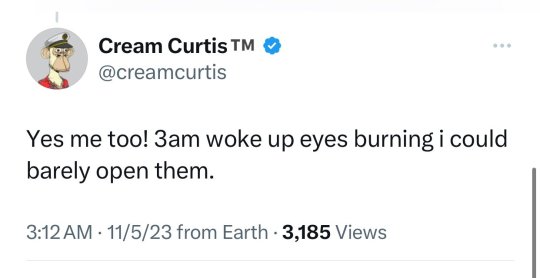

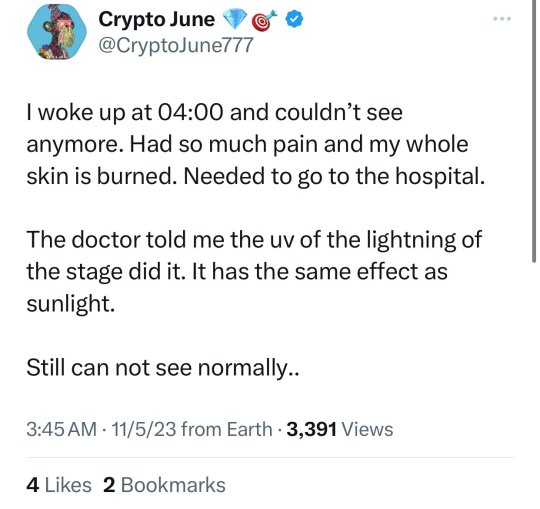
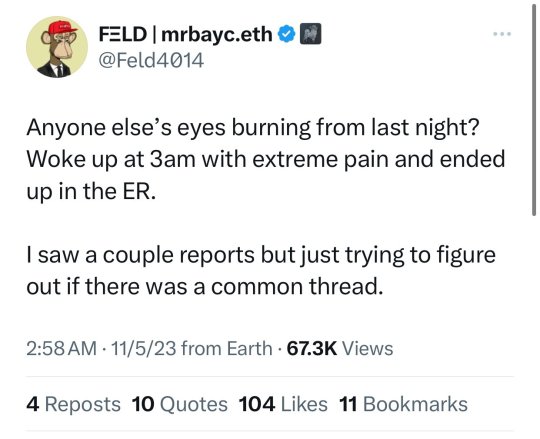

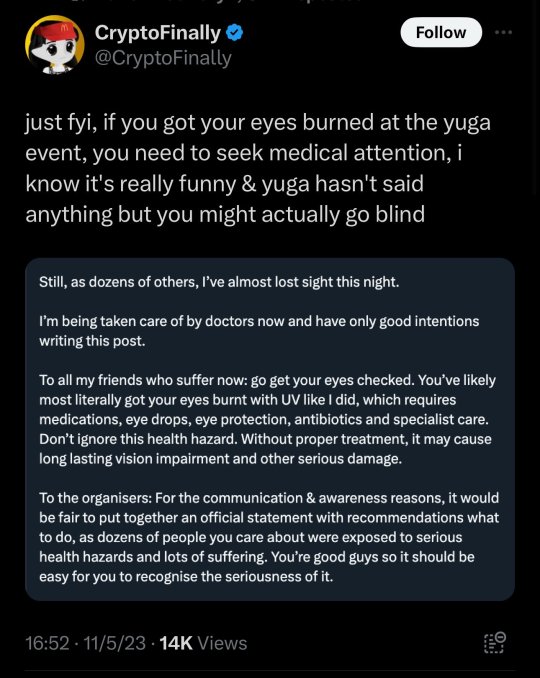
#lol. lmao even#specifically the lamps used emitted uv c light#which is the light frequency used in germicidal lamps#imagine paying thousands of dollars fo attend this only to walk away w welder's eye and sunburn so bad you get welts
14 notes
·
View notes
Text

In an era where cleanliness and health safety have become paramount, the travel and hospitality industry is undergoing a profound transformation. One such technology at the forefront of this change is the UVC Germicidal Lamp.
0 notes
Text
Air quality and it's bacteria can be a serious concern. If you are one of those who suffer from allergies or asthma respiratory conditions you know that clean air is the most important. Not being able to breathe is truly scary. Germicidal UV can make the difference. Environmental Protection Agency (EPA) frequently reported that indoor air can be more polluted than the air outside. Whether you have a health condition or not, you could definitely benefit from breathing cleaner air with UV purifiers for your home.
How do these devices work? Germicidal UV cleaners use filters and Ultraviolet light to purify the air inside your home. You might be surprised but microscopic allergens like dust, mold, mildew, pet dander and pollen live in the same indoor area as you do. Air pollutants come from any source, furniture, rugs, carpets, toys, pets you name it and even the household cleaning product.
Maybe you are not one who suffers from these health conditions but maybe you are sensitive to other smells and bad odors, cigarette smoke, or dog and cat smell can be enough to drive some people totally insane. The greatest thing about germicidal UV systems are their ability to remove these microorganisms offenses and leave your air feeling clean and truly breathable.
OK UV (ultraviolet light) is only one part of your air purification system but you already have air filters. Although it is a must you change these at a regular times. The regular filter catches dust particles now is when you need to finish the cleaning action. Germicidal UV lights destroys microorganisms like bacteria, mold, and viruses that lurk in your home. Did you know that germicidal UV air purifiers are effective at removing up to 99% of allergens and microorganisms that make you sick, air pollens, mold spores, and dust mites. This would be your best insurance for quality air.
Still not convinced ask your local hospital or your city administrator about ultraviolet germicidal. You will be surprised to find just how many places it being used. In most cities water sterilization plant.. Hospitals use germicidal UV on instruments for operations and in many rooms customers occupy. Some offices use them in their customer waiting areas. Germicidal UV is used in so many other locations and application in your everyday life.
Universities like University of California Davis have and are doing extensive research in the ultraviolet field. This ongoing technology is ever surprising scientists. UV light sterilization for water plants that feed Las Vegas Nevada making water available for tens of thousands every day. States like California would not be able to survive without this technology. Almost every state uses one form or another of the Germicidal UV. Although it has been available to every home owner it is only in the last few years that every day people are learning and understanding all the benefits of the UV world.
Making this one of your home protectors will save you money. Just think no more chemicals to clean the air handler and ducts. Having less service calls lowering your every day operating cost because parts are running clean reducing wear and tear. Germicidal UV is here today and will continue improving your environment. Look closely at this technology, Newinavations.
Hope you enjoyed this article written by Jerry Wang. Germicidal UV is for the very best air quality. UV light sterilization for clean water.. Save your money. Get what you and your family need to maintain a healthy lifestyle. There is much more information available for your asking. also before you buy get your discount coupon. [https://www.fivergroup.com/] and [https://www.fivergroup.com/uv-air-sterilizer-1.html]
#China Germicidal UV Lamps#China UV Electronic Ballast#uv electronic ballasts#UV Lamp Ballast Manufacturer#China Electronic Ballast
0 notes
Text
May 31, 2024
LP: What’s the cost of a device for measuring CO2? Is there an easily affordable device?
PA: Absolutely. You can get a $50 device that shows the CO2 concentration in a room. Every classroom should have this, and every office, every workplace. There are a couple of other things they should be doing, too. They can augment it with filtration with MERV 13 filters. If you can’t do it in the building’s HVAC infrastructure, you can make portable ones for about $60 [See Corsi Rosenthal Boxes]. The other thing that is super important and super powerful, probably the best thing we could do, is what are called germicidal UV lamps. If you set those up in a room, it’s equivalent to about 24 air exchanges per hour. So they’re even better than ventilation and filtering.
I should point out that there are, in fact, places that have installed all of these: fresh air, filtering, and germicidal UV lights. Do you know where they are?
LP: Where?
PA: The White House, Congress, Number 10 Downing, Parliament, the Reichstag, and WHO. All of our leaders have these protections and procedures in place.
LP: But not our schoolchildren.
PA: Well, the school where [former CDC director] Rochelle Walensky’s children go, they have these upgrades.
LP: But your average public school, not so much, I’m assuming.
PA: No. Part of the problem was that while the schools were given the money to do these things, but because the WHO and the CDC were not open about the airborne nature of the virus, they spent it on things that didn’t help, like surface cleansing, plexiglass shields, and gloves instead of on air quality improvement.
25 notes
·
View notes
Text
There is a type of old glass called “sun-purpled” that was transparent when manufactured but has gradually turned purple over years of exposure to UV rays. It’s a chemical reaction from manganese in the glass. I first learned about this when looking at some antique purple windows in Beacon Hill in Boston (fancy neighborhood full of picturesque brick row houses)—there was a plaque explaining the phenomenon nearby.
I was reading something about sun-purpled glass today and learned that collectors and historians have strong feelings about the practice of people putting old glass under lamps to cause swift artificial purple-ization:
“There is a dilemma in the world of Early American Pattern Glass that needs addressing. It is the widespread practice, in the southwestern United States, of exposing EAPG to a germicidal black light for a few weeks or directly to the sun for an extended period of time thus turning the glass artificially purple. The merchandising MO is to buy old glass, do the exposure thing, take the pieces that turn a pukey light purple (some flint won’t turn), hike up the price, write a little purple flyer with a charming story about how the sun, over the past hundred years has reacted with a chemical, ‘magnesium’ (sic), in the glass and created this glorious purple antique.”
The scandal! Truly there are millions of tiny specific dramas in every corner of every single discipline, hobby, fandom, subculture, etc.
131 notes
·
View notes
Text
Germicidal UV lights could be producing indoor air pollutants, study finds
While useful for killing pathogens including SARS-CoV-2, the lights may cause unwanted chemical reactions and should be used with ventilation, researchers say.
David Chandler | MIT News
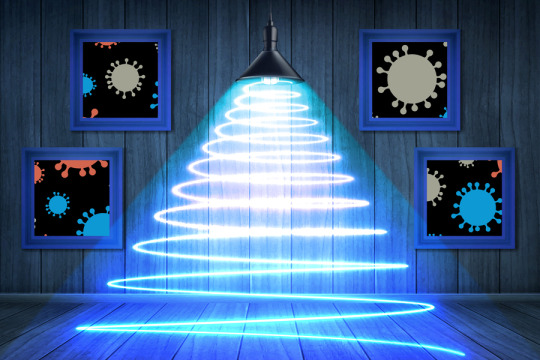
Many efforts to reduce transmission of diseases like Covid-19 and the flu have focused on measures such as masking and isolation, but another useful approach is reducing the load of airborne pathogens through filtration or germicidal ultraviolet light. Conventional UV sources can be harmful to eyes and skin, but newer sources that emit at a different wavelength, 222 nanometers, are considered safe.
However, new research from MIT shows that these UV lights can produce potentially harmful compounds in indoor spaces. While the researchers emphasize that this doesn’t mean the new UV lights should be avoided entirely, they do say the research suggests it is important that the lights have the right strength for a given indoor situation, and that they are used along with appropriate ventilation.
The findings are reported in the journal Environmental Science and Technology, in a paper by recent MIT postdoc Victoria Barber, doctoral student Matthew Goss, Professor Jesse Kroll, and six others at MIT, Aerodyne Research, and Harvard University.
While Kroll and his team usually work on issues of outdoor air pollution, during the pandemic they became increasingly interested in indoor air quality. Usually, little photochemical reactivity happens indoors, unlike outdoors, where the air is constantly exposed to sunlight. But with the use of devices to clean indoor air using chemical methods or UV light, “all of a sudden some of this oxidation is brought indoors,” triggering a potential cascade of reactions, Kroll says.
Initially, the UV light interacts with oxygen in the air to form ozone, which is itself a health risk. “But also, once you make ozone, there’s a possibility for all these other oxidation reactions,” Kroll says. For example, the UV can interact with the ozone to produce compounds called OH radicals, which are also powerful oxidizers.
Barber, who is now an assistant professor at the University of California at Los Angeles, adds, “If you have volatile organic compounds in the environment, which you do basically in all indoor environments, then these oxidants react with them and you make these oxidized volatile organic compounds, which in some cases turn out to be more harmful to human health than their unoxidized precursors.” The process also leads to the formation of secondary organic aerosols, she says. “Again, this stuff is harmful to breathe, so having it in your indoor environment is not ideal.”
The formation of such compounds is particularly problematic in the indoors, Kroll says, because people spend so much of their time there, and low ventilation rates can mean these compounds could accumulate to relatively high levels.
Having studied such processes in outdoor air for years, the team had the right equipment in hand to observe these pollution-forming processes indoors directly. They carried out a series of experiments, first exposing clean air to the UV lights inside a controlled container, then adding one organic compound at a time to see how they each affected the compounds that were produced. Although further research is needed to see how these findings apply to real indoor environments, the formation of secondary products was clear.
The devices that make use of the new UV wavelengths, called KrCl excimer lamps, are still relatively rare and expensive. They’re used in some hospital, restaurant, or commercial settings rather than in homes. But while they have sometimes been touted as a substitute for ventilation, especially in hard-to-ventilate older buildings, the new study suggests that’s not appropriate. “Our big finding was that these lights are not a replacement for ventilation, but rather a complement to it,” says Kroll, who is a professor of civil and environmental engineering, and of chemical engineering.
Some have proposed that with these devices, “maybe if you could just deactivate the viruses and bacteria indoors, you wouldn’t need to worry about ventilation as much. What we showed is that, unfortunately, that’s not necessarily the case, because when you have less ventilation, you get a buildup of these secondary products,” Kroll says.
He suggests a different approach: “There may be a sweet spot in which you’re getting the health benefits of the light, the deactivation of pathogens, but not too many of the disbenefits of the pollutant formation because you’re ventilating that out.”
The results so far are from precisely controlled lab experiments, with air contained in a Teflon bag for testing, Barber points out. “What we’re seeing in our bag is not necessarily directly comparable to what you would see in a real indoor environment,” she says, “but it does give a pretty good picture of what the chemistry is that can happen under radiation from these devices.”
Goss adds that “this work allowed us to validate a simple model that we could plug in parameters to that are more relevant to actual indoor spaces.” In the paper, they use this information “to try to apply the measurements we’ve taken to estimate what would happen in an actual indoor space.” The next step in the research will be to attempt follow-up studies taking measurements in real-world indoor spaces, he says.
“We’ve shown that these are a potential concern,” Kroll says. “But in order to understand what the full real-world implications are, we need to take measurements in real indoor environments.”
“These 222-nanometer radiation devices are being deployed in bathrooms, classrooms, and conference rooms without a full accounting of the potential benefits and/or harm associate with their operation,” says Dustin Poppendieck, a research scientist at the National Institute for Standards and Technology, who was not associated with this study. “This work lays the foundation for a proper quantification of potential negative health impacts of these devices. It is important this process is completed prior to relying on the technology to help prevent the next pandemic.”
The work was supported by the National Science Foundation, the Harvard Global Institute, and an NIEHS Toxicology Training Grant.
2 notes
·
View notes
Text
Germicidal UV-C Light 24 Volt for Central Ducted Indoor Units in Centralacwarehouse.com
Water resistant remote mountable UV lamp
99.99% Power factor.
UL approved.
1 year lamp & 5 year power supply warranty
PRICE: $129.99
1 ton central air conditioner, 2 ton central air conditioner, 3 ton central air conditioner, 1 ton ac unit, 2 ton ac unit, 3 ton ac unit
LINK: https://www.centralacwarehouse.com/category/parts-accessories
2 notes
·
View notes
Text
Conditions of the Ninth House
Ok I was just joking around that "It's a good thing the Ninth are the bone necros because they probably all have rickets being on Pluto" but then I wondered, would they?? how weak is their daylight?
Bunch of back of the envelope calculations and ruminations under the cut but the tl;dr is that brightest day Harrow would've experienced prior to Canaan House was darker than that of a typical grocery store interior
--
They aren't under a planetary atmosphere and I'm no physicist but I think light is light in a vacuum, some UV would reach that far just as some visible light does and due to them being partially a space station basically they are going to be under radiation we aren't.
Measurements for Solar radiation (W/m^2) on Earth are 1,413 at max and 1,321 at min. For Pluto due to its highly eccentric orbit it is much more extreme at 1.55 and 0.57. Compare this with Neptune which is 1.54 max and 1.47 min. Using the above and the value of 98,000 lux (a unit for brightness) for noon on Earth, I did some quick calculations that put noon on Pluto to vary between 114 lux to 42 lux (again due to its substantial orbital eccentricity). Putting that in comparable terms: average living room in Australia in 1998 was apparently 50 lux. Sunrise and sunset on Earth is ~400 lux. The dark limit of civil twilight (most can still read) is 3.4 lux. Night of fullmoon is 0.05-0.3 lux. Recommended office lighting is 320-500 lux.
With the above in mind, natural light reaching Drearburh at its brightest is comparable to a typical living room. And Pluto's rotation is 6.4 Earth days so the changes in natural lighting would be much more gradual than what Harrow would've experienced in Canaan house. It must have been quite the sensory overload + chaos for her!
Now for UV!
As far as UV goes, only Pluto readings I can find are in Rayleighs and I am too lazy to convert them [also yes I believe this is reflected off Pluto but it does not matter for our purposes as that is some of the light they'd be getting hit with] not many crafts have been to Pluto lol

So I'm just gonna go off a common value based on distance that Pluto receives roughly 1/1600 of the light we do. Thus, its UV will be 1/1600 of the UV on the ISS (Drearburh is under artificial atmosphere but it is unclear what filtering it does in terms of UV so I'm mostly ignoring that). Earth 's atmosphere filters out basically all UV-C (germicidal really intense one) and about 90% or more of UV-B (the sunburn one).
Unfiltered sunlight composition is about 10% UV so 10% of those earlier solar radiation measurements of 1.55 and 0.57 W/m^2 is UV. This gives us the convenient calculation to 0.155 and 0.057 W/m^2 in the UV spectrum.
For some reason it was impossible for me to find simple measurements of UV in W/m^2 lol (everything was already adjusted to different units). BUT I was able to pull up a few studies that had those as raw data for entirely different thing and most helpful was one in Kuwait where UVB was 0.25 W/m^2 or this map where it is in mW/m^2 (so 200 = 0.2).
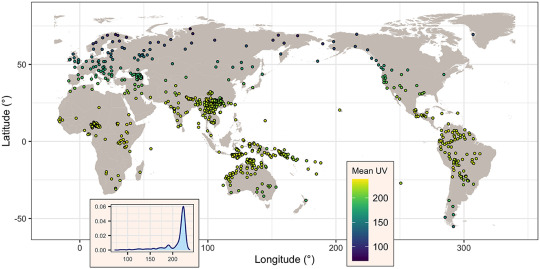
In terms of UV, this would put the Ninth House within the range of Southern England during its perihelion and to Scandinavia during its aphelion so yes it is in fact Rickets City.
perihelion = closest to sun; aphelion= furthest
It is likely the house makes use of UV-producing lamps for its population especially given the major malnutrition issues and that the founding population included at the very least some people of Maori descent, potentially other ethnic groups with often brown skin, and people with darker skin can be more susceptible to low Vit D in low UV environments since their melanin is blocking what precious little UV they are getting. John made many oversights e.g. he's able-bodied so the houses lack automated doors, but given his background I'd imagine he'd catch onto this at least. I believe there are mentions of arc lamps in the text and these can let off some UV so there's some textual support to this idea. However, I do imagine they still rely heavily on necromancy to heal rickets just as they do other conditions. [Also normally, I'd say "realistically" after 10k years they'd likely have lost a lot of their melanin responsivity as that has happened quite quickly in humans (Cheddar Man vs modern white brits or Ashkenazi Jews vs Mizrahi ones) but the Ninth House is a much more stable environment than European history LOL, like people are provided their food and there's no war at home, etc so the "use it or lose it" selection pressure isn't as relevant as it would be for cave animals. But also "realistically" doesn't matter anyways for a bunch of reasons and the Houses clearly engage in some genetic meddling anyway (Ianthe and Coronabeth's Alexandria's Genesis asses have violet eyes).]
Lastly, the height of no-one-else-gives-a-shit-Avery, but the low light also has major implications for their crop production. "Low light" houseplants [University of Melbourne] have lux within "270 to 807". The Ninth likely has to be using either additional lights for their snowleeks and/or they are channeling a lot of light into a mirror/reflector and beaming it over the growing area. The latter makes the most sense to me.. though given how dark it is they probably should've just GMO'd some lower water column algae
#TLT#TLT meta#dubious calculations#i wish i didnt hate drawing backgrounds bc i would love to design the snowleek fields LOL#the diet on the ninth is so bad#god i hope they are on b12 supplements
6 notes
·
View notes
Text
0 notes
Text
Change Fridge Water Filters in Australia: Improve Quality & Performance!
Health experts advise installing compatible fridge water filters in Australia to ensure clean and safe drinking water directly from the refrigerator.
These filters eliminate pollutants like silt, chlorine, and other toxins, resulting in fresh-tasting water for drinking, cooking, and producing ice.
A UV water filter in Melbourne has a wide range of applications in both home and business spaces. Trusted water filtration device vendors offer high-quality UV-technology water purifiers that are ecologically friendly because they do not utilize chemicals or emit toxic byproducts, making them a safe and sustainable solution for water treatment.
UV water purifiers are highly successful in eradicating hazardous bacteria, viruses, and other pathogens that may be present in water, offering a dependable and chemical-free technique for water disinfection.

They are widely utilized in residential, commercial, and industrial environments, including houses, hospitals, restaurants, and manufacturing plants.
Trusted water filter suppliers offer high-quality fridge water filters for top brands like LG, Samsung, Whirlpool, and Maytag. These filters are popular in homes, offices, and commercial settings, providing clean and refreshing water for daily use.
They provide top-quality appliances that require less maintenance, with no need for frequent filter replacements or complicated processes.
The UV method is an effective instrument for assuring safe and clean drinking water. These suppliers provide premium UV filters that are built with specialized UV lamps and emit a specific wavelength of 254 nanometers known as the germicidal spectrum of UV light. This wavelength can damage the DNA of bacteria and other microbes, preventing them from functioning or reproducing.
These UV water purifiers give an extra layer of protection against these hazardous germs, to guarantee the water people drink, prepare meals, and use is safe and clean.
Meanwhile, find a recognized water filter supplier through detailed research. Check their market reputation, and whether they maintain communication transparency, competitive pricing, and reliable customer support.
Finally, contact them for a consultation to buy your need to prevent waterborne infections and maintain overall well-being.
Source
0 notes
Text


Full on germicidal UV lamps.
Hey, has anyone checked up on those NFT guys lately?
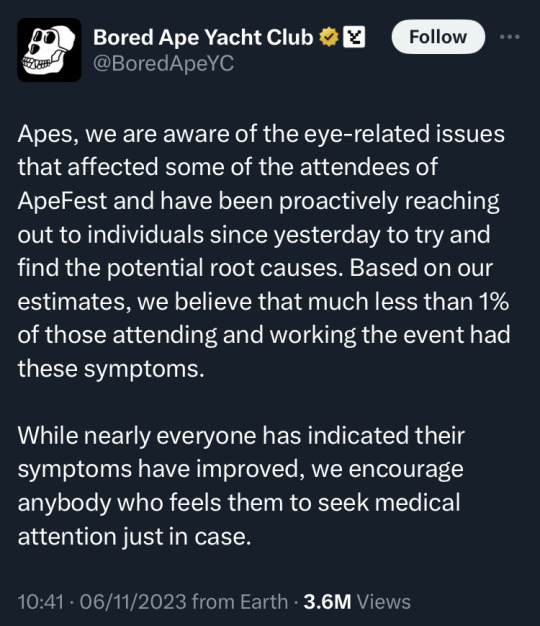
Turns out they hosted an event and used bulbs that emit UV-C radiation which has blinded some of the attendees.
Casually downplayed as ‘eye-related issues’ - The PR team really stretching it there.
2K notes
·
View notes
Text
Have you ever heard that ultraviolet (UV) light can be a biocide for living things? You can find the answer within the following info.
Starting with the history, the study on UV rays and its biological effects began around 1888 when Neils Ryborg Finsen decided to analyze this matter. He proposed that UV rays could kill bacteria. This discovery motivated other inventors to perform further analysis on this subject, including the mechanism of UV rays on microorganisms and applications in biology, medical sterilization, also air and water treatment.
UV (ultraviolet) light is part of electromagnetic spectrum which ranges from gamma rays to radio waves. The short wavelength and high frequency gamma rays are more energetic than radio waves which have long wavelength and low frequency. Therefore radio waves do not give bad effects no matter how long you are exposed to it. On the other hand, the short waves from gamma rays will be dangerous, even deadly.
Of the electromagnetic spectrum, UV ray goes around 10-400 nanometers in which UVA exists in the 100-280nm, UVB for 280-315nm, and UVC stands 315-400nm. There is UV lamps which are designed to create biocide at 260-nanometer emission. To kill bacteria, UV light penetrates their cells to break the DNA (deoxyribonucleic acid). This acid has such chemical which bonds the atoms together. UV ray brings massive damages to the bond and knocks the electrons. To kill a large amount of bacteria, short exposure of UV light is not enough. That is why it needs moderate dose of UV light.
For sterilization applications, Ultraviolet lamps are used to sterilize aquarium water. The UV lamp applied to a small assembly in which the light irradiates the water pumped through the device. In addition, UV light is used in water filter to produce hygienic drinking water, killing any harmful microorganisms. With UV ray water filter you can get bottled water quality just by pushing the button of the faucet in your home.
Talking about UV light, you are probably interested in any discussions on spectrum and any devices dealing with this subject. Thus you can visit [https://fivergroup.com/uv-air-sterilizer-1.html] and read other articles of Lucien Lester on UV VIS spectrometer [https://fivergroup.com/6-benefits-of-using-uv-light-for-disinfection-22.html]. Within those articles you can also find reviews on such spectrometers which you can take into consideration before you purchase one.
#China Germicidal UV Lamps#uv electronic ballasts#UV Lamp Ballast Manufacturer#China Electronic Ballast
0 notes
Text
So inside urinals and toilets, they can Place u v c lights to sterilize the water and the waste pee and poop... They could use this for kitty, litter boxes, and dog litter boxes....
They should use a slight in the food service industry. As well as the food processing industry...
In general, UV-C is used to sterilize water and food surfaces, whereas UV-A and UV-B are effective for sterilizing dry surfaces. UV-C, which has a shorter wavelength, has a higher light energy level than UV-B and UV-A; therefore, it is widely used for water or liquid food sterilization [19, 20].
https://www.ncbi.nlm.nih.gov
Impact of UV-C Irradiation on Bacterial Disinfection in ... - NCBI
Ultraviolet (UV) light disinfection is a water treatment system that uses UV light to remove most microbiological contamination from water. UV light is part of natural sunlight and is effective against all viruses, bacteria, and protozoa. The process works by exposing microbes in the water to a specific wavelength of UV light, which alters their DNA and makes them unable to replicate. The treated water is then safe for drinking, bathing, and food production.
Here's how UV water treatment works:
Pre-treated water enters a stainless steel chamber and flows around a UV lamp.
The UV lamp emits a germicidal wavelength that impacts the living organisms in the water.
The water is exposed to UV waves and the bacteria and other organisms are deactivated.
The treated water then leaves the chamber and enters your homes water supply.
UV disinfection systems are installed worldwide and are a recognized method for bacteria and virus removal for virtually all water treatment processes. However, there are some disadvantages to water treatment with UV light, including:
Ineffective against dissolved solids
UV light is not effective at removing dissolved solids, such as heavy metals and minerals, from the water.
Expensive
UV filters can be relatively expensive to purchase and operate. A residential UV system typically costs around $400 or $500.
Electricity costs
You'll also need to consider that it's going to cost you a little bit in electricity.
Light bulb replacement
You'll need to replace the light bulb about once per year.
WA Health
Ultraviolet disinfection of drinking water
Jun 3, 2022
0 notes
Text
MRI Sterilizer

Abimed MRI Sterilizer uses hydrogen peroxide and a photocatalytic/UV disinfection module with a high-intensity germicidal lamp. It features man-machine coexistence photocatalysis and stores 6 to 35% food-grade H2O2 solution, ensuring effective and safe sterilization for MRI facilities.
0 notes
Text
0 notes
Text

Germicidal UV-C Light 24 Volt for Central Ducted Indoor Units in Centralacwarehouse.com
Water resistant remote mountable UV lamp
99.99% Power factor.
UL approved.
1 year lamp & 5 year power supply warranty
PRICE: $129.99
1 ton central air conditioner, 2 ton central air conditioner, 3 ton central air conditioner, 1 ton ac unit, 2 ton ac unit, 3 ton ac unit
LINK: https://www.centralacwarehouse.com/category/parts-accessories
2 notes
·
View notes